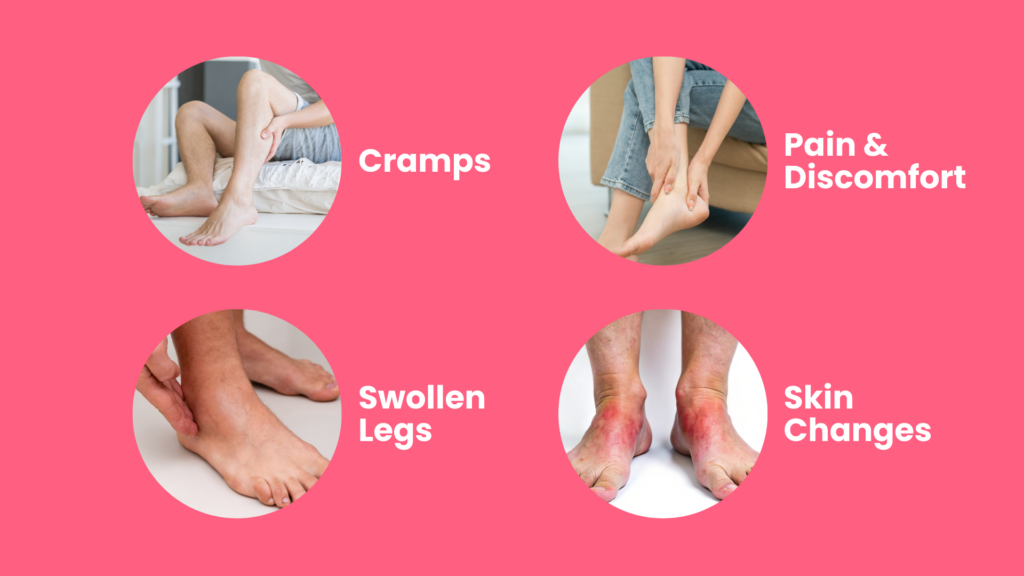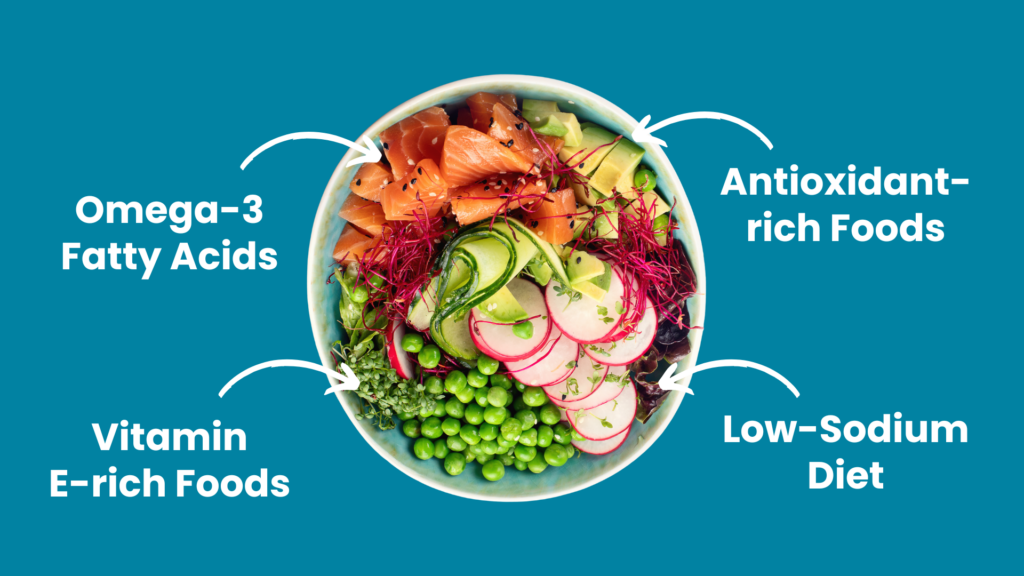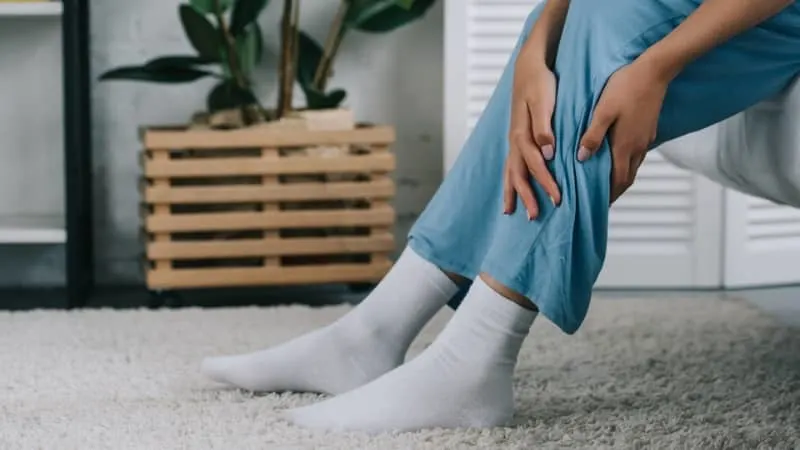Varicose veins cause discomfort and concern for many people. For some, they are an eyesore, but many patients experience pain, and they could be a sign of other vein problems down the road.
These twisted, swollen veins, often blue or purple, are more common than you might think: they affect about 23% of adults in the USA.
Medical treatments exist, such as radiofrequency ablation and sclerotherapy. However, several home remedies can help reduce the pain or discomfort you feel from varicose veins.
Table of Contents
ToggleHow Do Varicose Veins Develop?
Varicose veins arise when the one-way valves in your veins weaken or malfunction. These valves help direct blood flow toward the heart.
When these valves malfunction, blood pools in the veins, which leads to their bulging appearance.
You can learn more about the development of varicose veins by watching the video above.
Symptoms of Varicose Veins

Identifying your symptoms early is essential so you can receive the appropriate care.
You’ll want to look out for the following symptoms to identify if you have varicose veins,
- Visible purple or red veins
- Aching or feeling heaviness in the legs
- Swelling of your lower legs
- Skin changes such as discoloration, itching, and dryness
Be sure to talk to your doctor if you experience any of the above to receive a proper diagnosis.
Risk Factors of Varicose Veins

Who develops varicose veins? Several factors increase the likelihood of developing this condition:
- Family history
- Prolonged sitting or standing
- Pregnancy and hormonal changes
- Obesity
- Sedentary lifestyle
If these symptoms or risk factors describe you, medical treatment is an option. Home remedies can be a great source of temporary relief from the symptoms of varicose veins. Keep reading to learn about 12 different options of home remedies.
Home Remedies for Varicose Vein Care
Before diving home remedies for varicose veins, it’s important to understand that while they can be beneficial, these cannot cure varicose veins.
Instead, these remedies can improve blood circulation, reduce inflammation, and promote vein health.
Here are some practical solutions that can help reduce varicose veins symptoms:
1. Regular Exercise
Moving your body is a great way to improve blood circulation. And exercise doesn’t mean a sweaty session at the gym or heavy weights.
Walking, swimming, or cycling can strengthen muscles that assist blood flow. Try out different exercises until you find your favorite.
Remember that consistency is key to promoting efficient blood circulation. Keep it up!
2. Healthy Diet

If you’re trying to reduce your symptoms, having a healthy diet is essential. Certain nutrients can result in symptom improvement. Here is what you should eat more of–and what you should avoid–when dealing with varicose veins:
- Omega-3 Fatty Acids. Include fatty fish (salmon, mackerel), flaxseeds, and walnuts in your meals. They’re packed with omega-3 fatty acids, known for their anti-inflammatory properties.
- Vitamin E-rich Foods. Vitamin E helps protect blood vessels and improves circulation. Add foods like spinach, nuts, and seeds to your diet.
- Antioxidant-rich Foods. Eat berries, citrus fruits, and dark leafy greens. Antioxidants support vascular health and reduce inflammation.
- Low-Sodium Diet. By reducing your salt intake, you avoid retaining excess water and swelling. Choose fresh, whole foods over processed and salty snacks.
3. Natural Remedies
It’s not just in the foods we eat: nature itself provides remedies for varicose veins. Consider integrating these natural options into your routine:
- Aloe Vera Gel. Aloe vera is known for its soothing properties. Applying aloe vera gel can ease inflammation and discomfort associated with varicose veins.
- Horse Chestnut Extract. This herbal remedy has shown promise in improving vein health. Talk to your doctor before adding horse chestnut extract to your routine.
- Butcher’s Broom. This plant extract is sometimes used to improve blood circulation and strengthen blood vessels.
4. Elevate the Legs

Whenever you can, raise your legs above the level of your heart. Lifting your legs up helps reduce swelling and improve blood circulation. Incorporate short periods of leg elevation into your daily routine. Try doing so first thing in the morning or right before bed so it’s easy to remember.
5. Weight Management
Obesity is one of the main risk factors for developing varicose veins. Maintaining a healthy weight prevents excess pressure in your legs. Combine a well-balanced diet with regular exercise to reach and stay at a healthy weight.
6. Compression Stockings
Consider wearing compression stockings, which provide graduated pressure to support blood circulation. The compression helps your veins push blood back up to the heart, preventing it from pooling. Compression stockings come in several styles. Talk to a vein specialist to choose the right type for your needs.
7. Wear Comfortable Clothes
Opt for loose-fitting, comfortable clothing to prevent constriction and promote healthy blood flow. Avoid tight clothing, particularly around the waist and legs.
8. Avoid Prolonged Sitting or Standing
If you sit or stand for long periods at work, take breaks to move and stretch your legs. Simple leg exercises at your desk can prevent blood pooling in the veins.
9. Regular Leg Massage

Gentle massages can help improve blood circulation in the legs. Start at your ankles and gently move upward with circular motions. Use a light to moderate pressure, focusing on areas where you feel tension. Consider incorporating a brief leg massage into your bedtime routine.
10. Maintain Healthy Posture
Good posture is essential for promoting proper blood flow. Here are some simple posture tips:
- When standing, evenly distribute your weight in both legs.
- Avoid crossing your legs for extended periods.
- Take breaks if you have a desk job – stretch and move around.
11. Avoid Stress
Did you know stress can contribute to varicose veins? Stress triggers the release of a hormone called cortisol, which can impact blood vessel health. Chronic stress may promote inflammation and poor circulation, causing varicose veins to develop.
Mindfulness and relaxation techniques can be a great way to reduce stress. At the very least, make sure you get regular exercise and adequate and restful sleep.
12. Over-the-Counter Pain Relievers
When dealing with the discomfort from varicose veins, you may need some extra help. Over-the-counter (OTC) pain relievers can provide temporary relief from pain or inflammation.
Common OTC options include ibuprofen, aspirin, and acetaminophen.
Remember that OTC medications should be a short-term solution. Extended or excessive usage can have adverse effects. Make sure you only take the recommended dosage. Talk to a medical professional if the pain persists.
Conclusion
Varicose veins are a source of pain and discomfort for many people and can lead to further medical issues later on. Incorporating these lifestyle changes into your everyday routine can provide much-needed relief.
But, while these are great ways to provide temporary relief, it’s important to remember that these are not cures. You can only reduce varicose veins with medical intervention.
Fortunately, there are minimally invasive treatments available that can cure varicose veins effectively.
When it’s time for you to seek medical treatment and take care of your varicose veins once and for all, contact Elite Vein Clinic. Our experts will consider your symptoms, risk factors, and lifestyle. From there, they’ll determine the best treatment option for you. We offer minimally invasive vein treatments in Phoenix, Chandler, Gilbert, Mesa, Scottsdale, Tempe, and Peoria. Ready to treat your varicose veins? Book a free consultation today and take the first step toward a healthier you!



